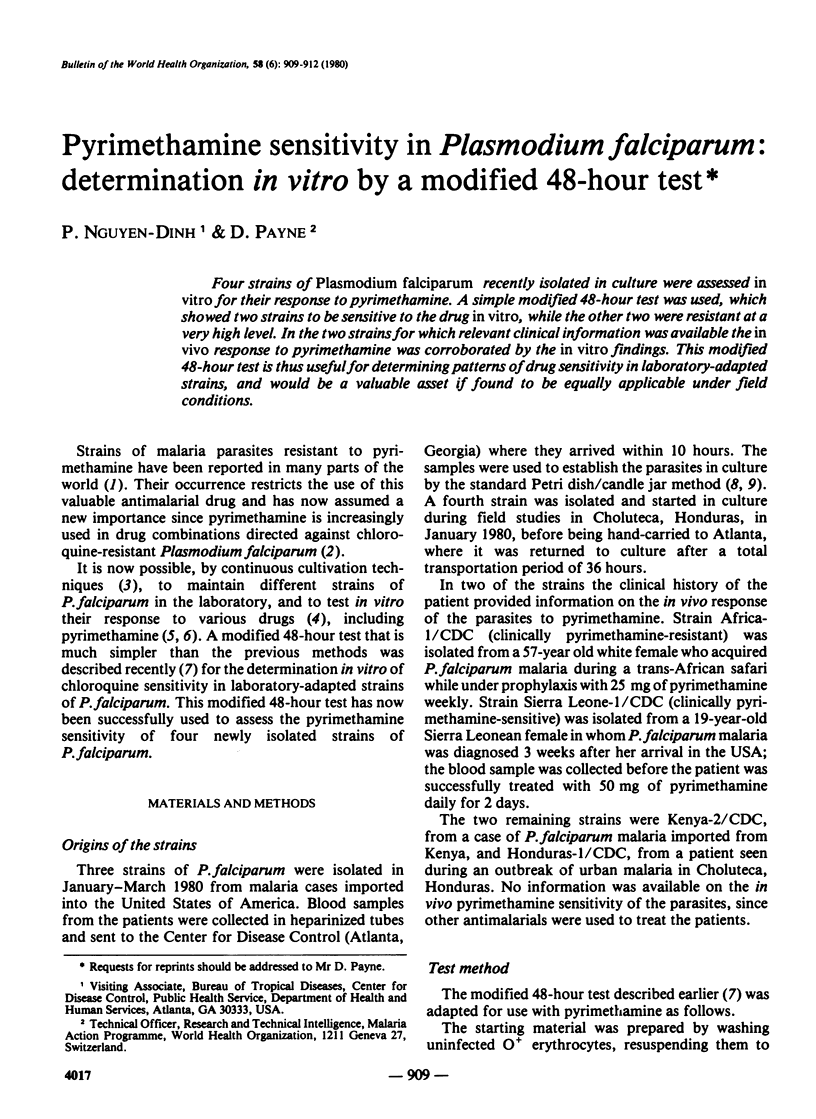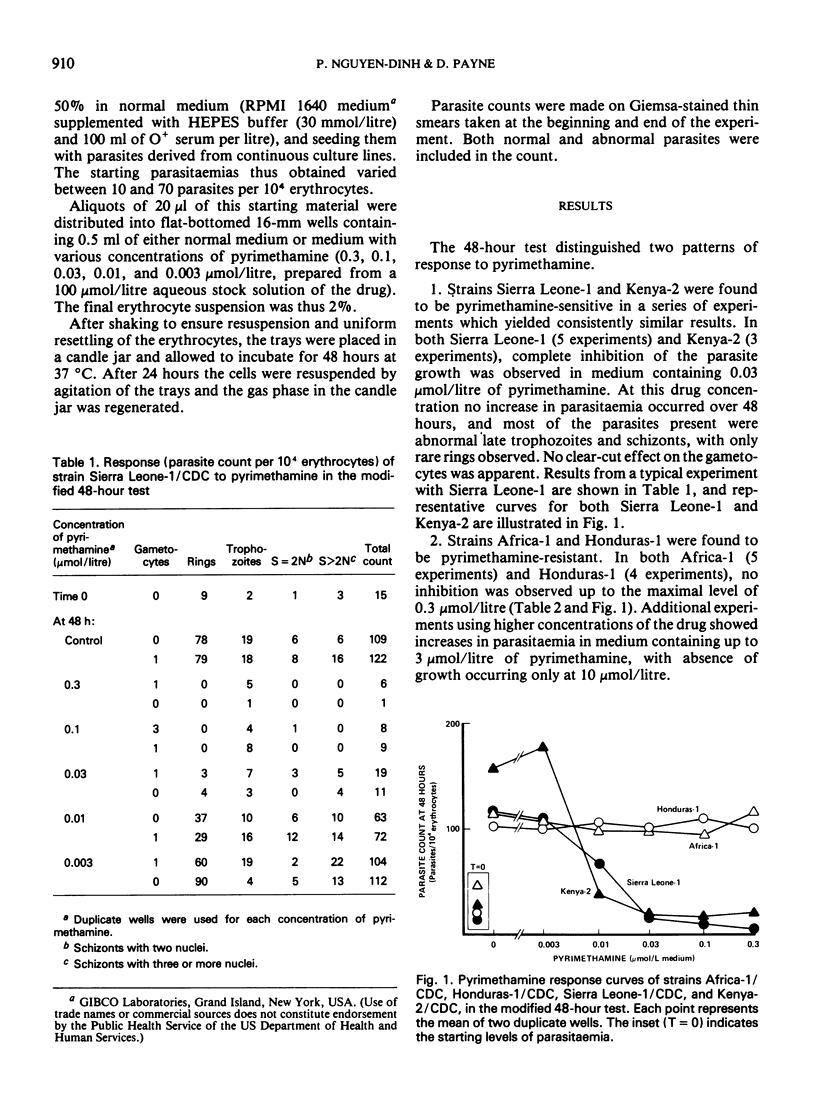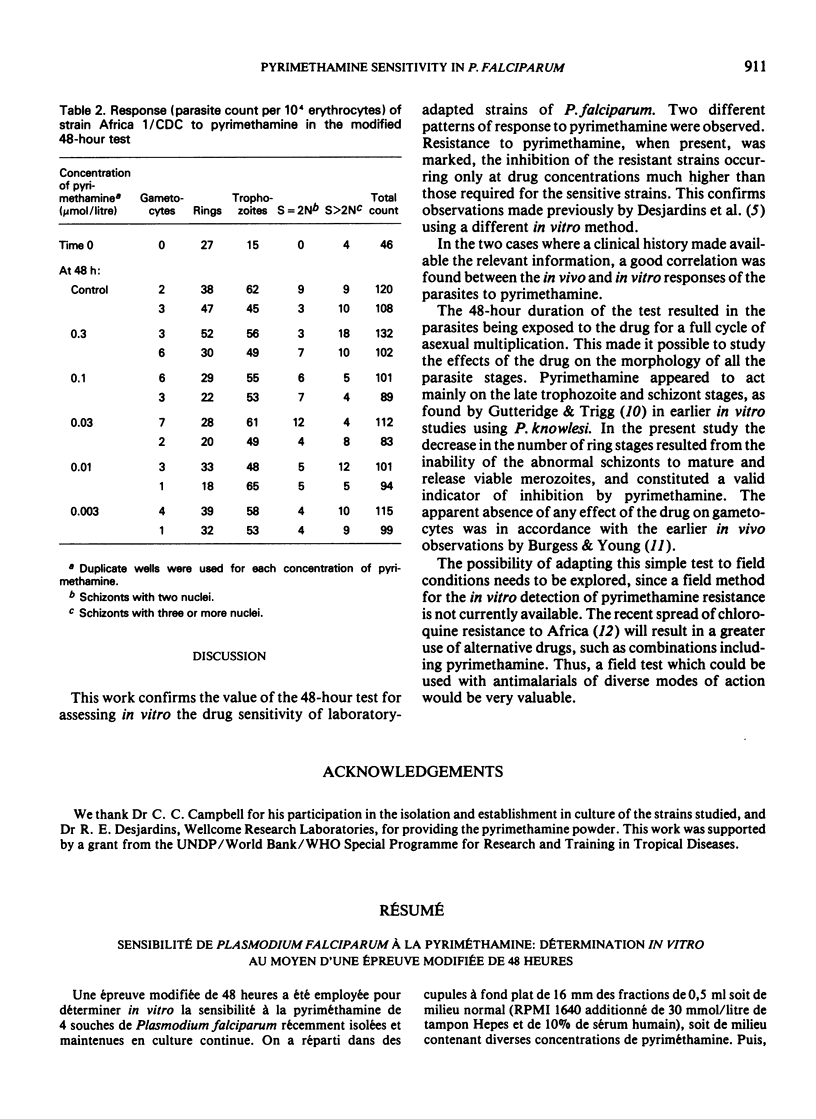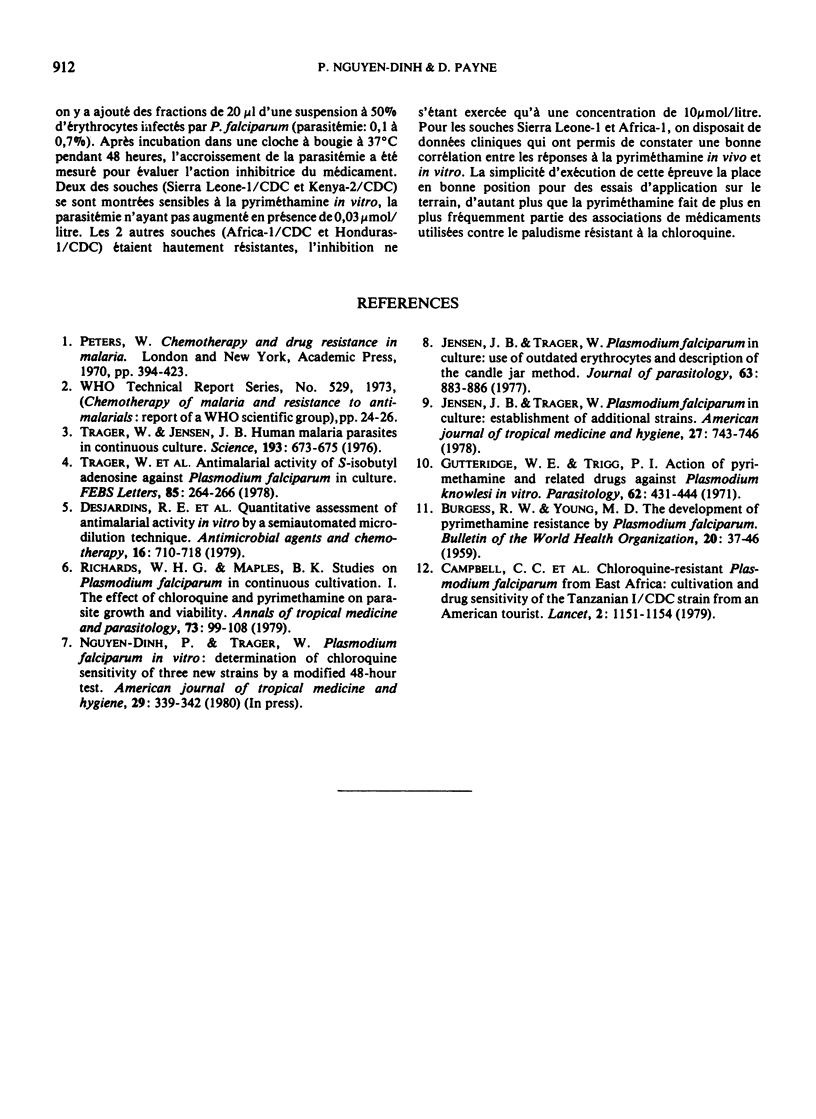Abstract
Four strains of Plasmodium falciparum recently isolated in culture were assessed in vitro for their response to pyrimethamine. A simple modified 48-hour test was used, which showed two strains to be sensitive to the drug in vitro, while the other two were resistant at a very high level. In the two strains for which relevant clinical information was available the in vivo response to pyrimethamine was corroborated by the in vitro findings. This modified 48-hour test is thus useful for determining patterns of drug sensitivity in laboratory-adapted strains, and would be a valuable asset if found to be equally applicable under field conditions.
Full text
PDF



Selected References
These references are in PubMed. This may not be the complete list of references from this article.
- BURGESS R. W., YOUNG M. D. The development of pyrimethamine resistance by Plasmodium falciparum. Bull World Health Organ. 1959;20(1):37–46. [PMC free article] [PubMed] [Google Scholar]
- Campbell C. C., Chin W., Collins W. E., Teutsch S. M., Moss D. M. Chloroquine-resistant Plasmodium falciparum from East Africa: cultivation and drug sensitivity of the Tanzanian I/CDC strain from an American tourist. Lancet. 1979 Dec 1;2(8153):1151–1154. doi: 10.1016/s0140-6736(79)92383-3. [DOI] [PubMed] [Google Scholar]
- Desjardins R. E., Canfield C. J., Haynes J. D., Chulay J. D. Quantitative assessment of antimalarial activity in vitro by a semiautomated microdilution technique. Antimicrob Agents Chemother. 1979 Dec;16(6):710–718. doi: 10.1128/aac.16.6.710. [DOI] [PMC free article] [PubMed] [Google Scholar]
- Gutteridge W. E., Trigg P. I. Action of pyrimethamine and related drugs against Plasmodium knowlesi in vitr. Parasitology. 1971 Jun;62(3):431–444. doi: 10.1017/s0031182000077581. [DOI] [PubMed] [Google Scholar]
- Jensen J. B., Trager W. Plasmodium falciparum in culture: establishment of additional strains. Am J Trop Med Hyg. 1978 Jul;27(4):743–746. doi: 10.4269/ajtmh.1978.27.743. [DOI] [PubMed] [Google Scholar]
- Jensen J. B., Trager W. Plasmodium falciparum in culture: use of outdated erthrocytes and description of the candle jar method. J Parasitol. 1977 Oct;63(5):883–886. [PubMed] [Google Scholar]
- Nguyen-Dinh P., Trager W. Plasmodium falciparum in vitro: determination of chloroquine sensitivity of three new strains by a modified 48-hour test. Am J Trop Med Hyg. 1980 May;29(3):339–342. doi: 10.4269/ajtmh.1980.29.339. [DOI] [PubMed] [Google Scholar]
- Richards W. H., Maples B. K. Studies on Plasmodium falciparum in continuous cultivation. I. The effect of chloroquine and pyrimethamine on parasite growth and viability. Ann Trop Med Parasitol. 1979 Apr;73(2):99–108. [PubMed] [Google Scholar]
- Trager W., Jensen J. B. Human malaria parasites in continuous culture. Science. 1976 Aug 20;193(4254):673–675. doi: 10.1126/science.781840. [DOI] [PubMed] [Google Scholar]
- Trager W., Robert-Gero M., Lederer E. Antimalarial activity of S-isobutyl adenosine against Plasmodium falciparum in culture. FEBS Lett. 1978 Jan 15;85(2):264–266. doi: 10.1016/0014-5793(78)80469-4. [DOI] [PubMed] [Google Scholar]


